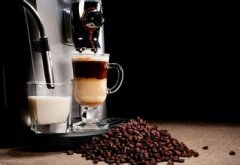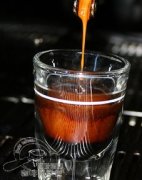Learn more about the form of espresso
Espresso is a science, but science can't tell you what coffee should taste like.

We often say that the production of espresso is an art similar to music. In a perfect small espresso (Espresso Ristretto), a great deal of aroma blends with the texture of the coffee. The finest aroma components are locked in the coffee fragrant oil, which only takes a while to taste immediately, and then leave some memory in the sweet, long aftertaste.
The whole purpose of the introduction is to make a cup of coffee: it is characterized by a deep reddish-brown syrup called Crema; this layer of oil characterizes the strong aroma of coffee without bitterness; and the ideal espresso smells like freshly ground coffee, with a velvet-like texture on the tongue.
Many people prefer the tradition of coffee roasting and blending in northern Italy. In this style, the coffee beans are roasted to a dark brown, but there is no oil on the surface of the freshly roasted coffee beans, which is the most caramelized and avoids the nutty taste overshadowing the natural sweetness.
The purpose of blending is to obtain a balanced and comprehensive fragrance. A single variety of coffee usually has some defects, which need to be offset or compensated by other varieties of coffee. Sweet, with a variety of fragrances and a sweet aftertaste, it can be called a good match. The aroma of coffee should be balanced, a certain ingredient can not dominate the taste of the whole cup of coffee.
After deeper roasting, the coffee beans are dark brown and slightly greasy, which can be seen in southern Italy and as far north as Naples, and you can feel more "roasting aroma" in the cup when tasting the coffee. This is an important distinction.
Coffee, which is called French baking in the United States, has a greasy, almost black surface. Espresso made from these deeply roasted beans has a smoky taste, and the roasted taste overwhelms the fine and sweet inherent in the coffee. This degree of roasting is more bitter than ordinary espresso. Pour it into a large cup of hot milk and taste like Caf é Au Lait. The traditional methods in northern Italy strike a perfect balance between the taste of baking and a variety of aromas. Unlike the tradition of fine wine, it takes two artistic creations to get a delicious cup of espresso. In the vineyard, the brewing and bottling of wine is mainly done by winemakers, and the masters are proud to create delicacies. As long as it is properly stored, when you open the bottle and present the wine, it will have a satisfactory taste.
The coffee is roasted, ground and packaged, and the rest is entirely up to the person who makes it. It is more difficult to make espresso consistently than to bake coffee. Similarly, as a producer, you are completely subject to the quality standards of coffee roasting and blending. A world-class espresso mix can easily be destroyed by an untrained producer, and the best bartender cannot go beyond the limits of the coffee he uses.
Important Notice :
前街咖啡 FrontStreet Coffee has moved to new addredd:
FrontStreet Coffee Address: 315,Donghua East Road,GuangZhou
Tel:020 38364473
- Prev

The Origin of French Milk Coffee Coffee making steps
The first to drink coffee mixed with milk is said to be Nehov, governor of the Dutch city of Badawiya in Indonesia in 1660. He was inspired by drinking English milk tea, so he tried to add milk to his coffee. Unexpectedly, the coffee after adding milk tasted smoother and smoother. In addition to the strong aroma of coffee, there was a faint smell of milk, which was still better than milk tea. But this kind of milk
- Next

Multiple factors that affect a perfect espresso
To take you into the world of espresso. On the basis of affecting the quality of coffee, we divide the production process into several elements to facilitate the organization of a large number of materials, not to say that these elements are independent of each other or can be defined separately. For example, there are many small factors that affect the pump pressure, we just assume that they are all normal, that the valves in the machine are well sealed, and that the outlet head seal ring is intact.
Related
- Beginners will see the "Coffee pull flower" guide!
- What is the difference between ice blog purified milk and ordinary milk coffee?
- Why is the Philippines the largest producer of crops in Liberia?
- For coffee extraction, should the fine powder be retained?
- How does extracted espresso fill pressed powder? How much strength does it take to press the powder?
- How to make jasmine cold extract coffee? Is the jasmine + latte good?
- Will this little toy really make the coffee taste better? How does Lily Drip affect coffee extraction?
- Will the action of slapping the filter cup also affect coffee extraction?
- What's the difference between powder-to-water ratio and powder-to-liquid ratio?
- What is the Ethiopian local species? What does it have to do with Heirloom native species?

